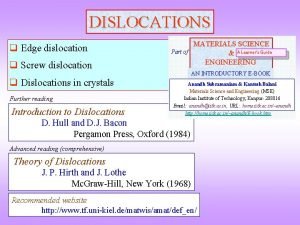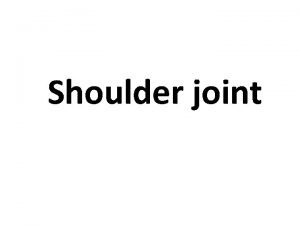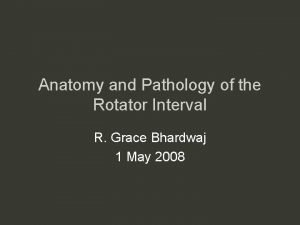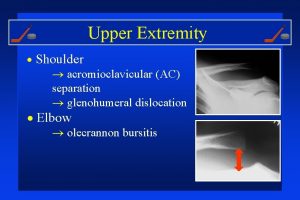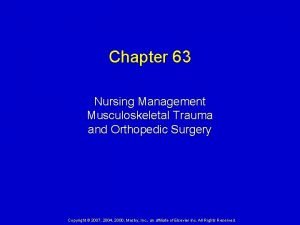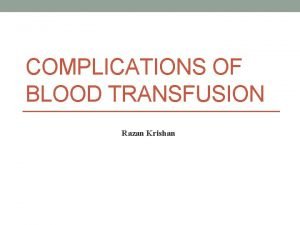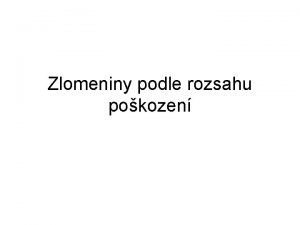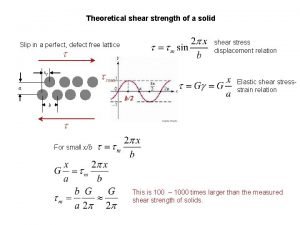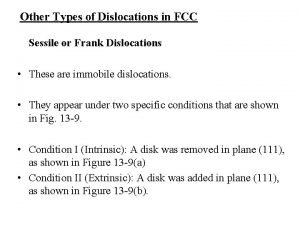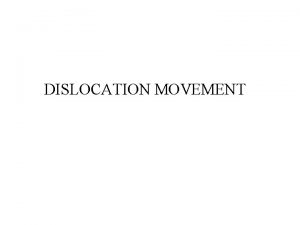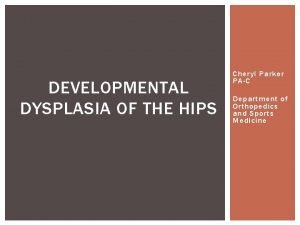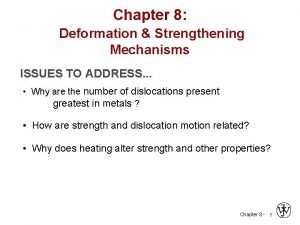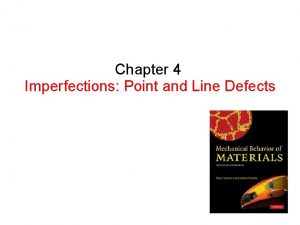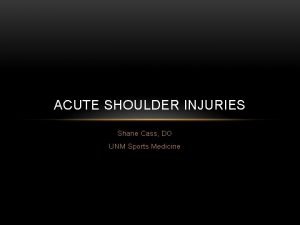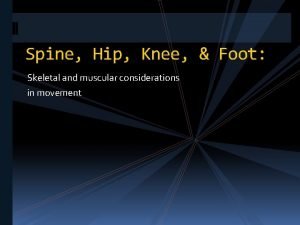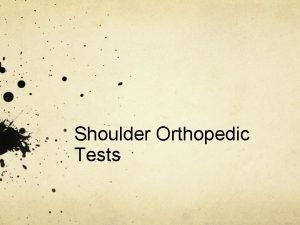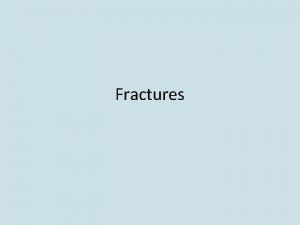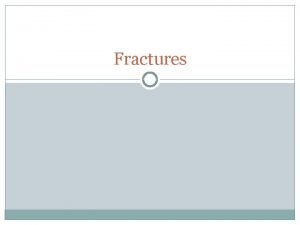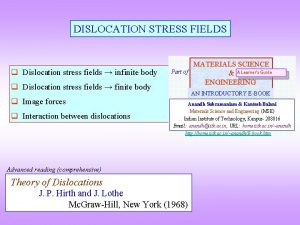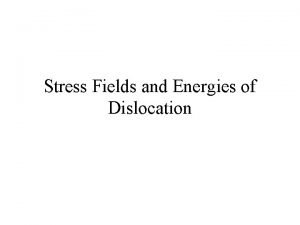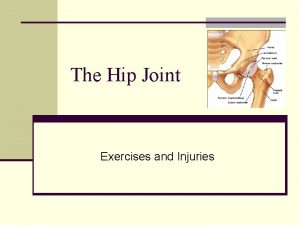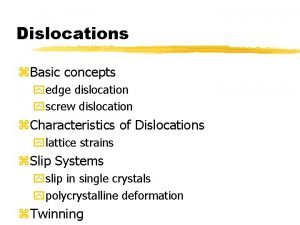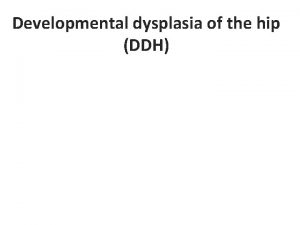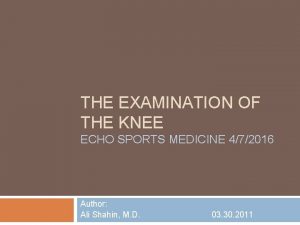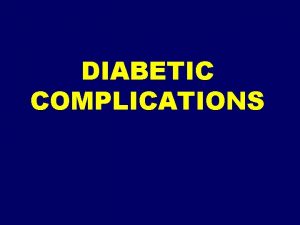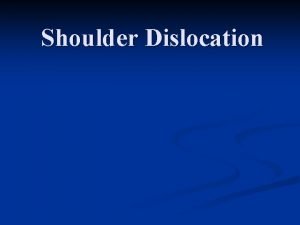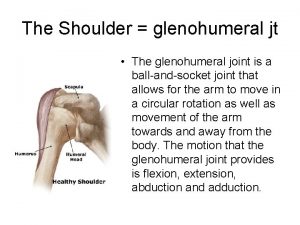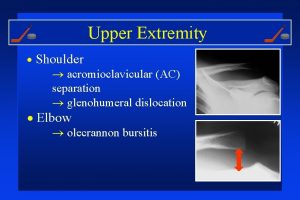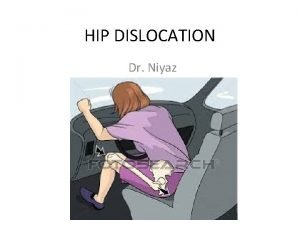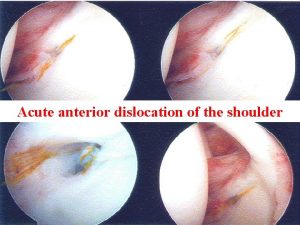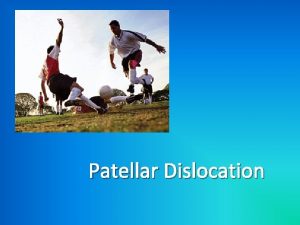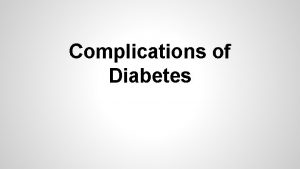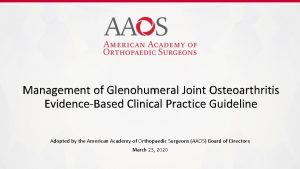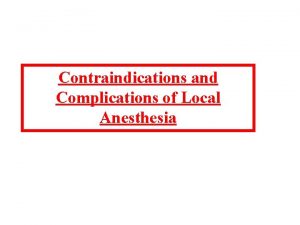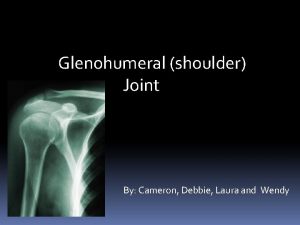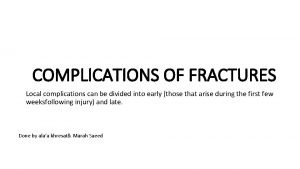Glenohumeral Dislocation Class Complications and Management August 21








































- Slides: 40

Glenohumeral Dislocation: Class, Complications and Management August 21, 2003 Emergency XR Rounds Simon Pulfrey (with much gleaned from Dave Dyck)

Objectives • • Types of dislocations Review radiographic anatomy Types of radiographic views Key issues of physical exam Reduction strategies “Common” complications Pre and Post radiograph discussion Follow-up/discharge issues

Normal

Glenohumeral Joint Dislocation • • Anterior Posterior Inferior (Luxatio Erecta) Superior

Anterior • Most common – 94 -97% of GH dislocation • 4 Types – Subcoracoid – Subglenoid – Subclavicular – Intrathoracic 99%

Case 1 • 29 y male, fell mountain biking - forced abduction injury to left arm, about 4 hours ago In severe pain. No prior injuries. • Holding arm in slight abduction and external rotation with right hand. • Refuses to adduct or internally rotate L arm. • L shoulder appears “squared-off”

What neurovascular exam will you do? • Neuro • Median, Ulnar, & Radial • Axillary N – Shoulder pin prick & deltoid motor activity – Injured in 5 -54% of cases – Usually >50 yrs • • Vascular Axillary Brachial Radial

? Need for pre-reduction x-rays • Shuster, Abu-Laban, and Boyd – Banff say NO • BUT – most others say YES! • Maybe NO in patient with recurrent shoulder dislocation and non-traumatic mechanism. • Is there a fracture prior to reduction?

To classify glenohumeral dislocations • Mechanism – Traumatic vs Non-traumatic • Frequency – Primary vs Recurrent • Anatomic position of humeral head

Diagnostic Strategies • 1 - True AP


2. Axillary


Transcapular or “Y” View



How to manage? • Analgesia? • None, procedural sedation, intraarticular LA injection • Reduction strategy • Incidence of neurovasc complications increase with time • The ideal method is simple, quick & minimally traumatic

Reduction methods • Stimson – Hanging weights. Not sedated. • Cooper&Miltch – forward elevation, flexion and abduction. • Traction-counter traction • Liedelmeyer – External rotation and abduction. • All have similar success rates • Hippocratic and Krocher are quite traumatic

Post-Reduction Issues • Neurovascular status • Re-radiograph? – 2 small studies –Harvey et al Am J Emerg Med 1992, Hendey et al Am J Emerg Med, suggest maybe not. Rosen says do. • Need to consider every case – recurrent, trauma, age, difficulty with reduction, comorbidities… 1996

Post reduction:

Hill-Sachs

Post reduction

Bankhart

Complications of anterior glenohumeral dislocation and reduction • Neurovascular – neuropraxic and recover in days-weeks • Fractures – Hill-Sachs – 11 -50% of ant dislocations. May be higher if consider minor compression fractures – Bankart – ant glenoid rim #. 5% of cases. – Avulsion # of greater tuberosity in 10 -15%.

Complications of anterior glenohumeral dislocation and reduction • Rotator cuff injury – 10 -15% will have tear. Higher incidence in those >40 yrs. • Capsulolabral avulsions in those of younger years




Infraglenoid Dislocation + Hill-Sachs Fracture


Luxatio Erecta:

Luxatio Erecta • 0. 5% • Usually axial load on abducted arm or indirect trauma • Presents with 100 -160 deg of abduction • Humeral shafts lies parallel to spine of scapula (infglenoid lies against chest wall) • Usually need ortho help • Wary buttonhole problem


Posterior Dislocation: -trough sign. Reverse Hill-Sach# on ante-medial hh. -Lightbulb/drum stick

Posterior Dislocation • Rare. 2%. • Commonly missed (50%!) • Seizures, fall on flexed and adducted arm, direct blow • Deceptively normal-appearing AP XR • Increased importance of clinical exam


Clinical Findings: • Arm adducted and internally rotated • The anterior shoulder is flat and the posterior aspect full • Prominent coracoid • The patient won’t allow abduction or external rotation


Rim sign: ant glenoid rim and articular surface of hh increased (usu>6 mm)

Summary • Reduce ASAP • Wary neurovascular status, fractures & rotator cuff injuries • Consider necessity of pre & post reduction films on an individual basis • Know well three methods of reduction • Suspect posterior dislocations in appropriate pts
 Extra half plane
Extra half plane Spine of scapula
Spine of scapula Regio shoulder
Regio shoulder Rotator cuff interval
Rotator cuff interval Omuz stabilizatörleri
Omuz stabilizatörleri Glenohumeral separation
Glenohumeral separation Nursing management of dislocation
Nursing management of dislocation Difference between edge and screw dislocation
Difference between edge and screw dislocation Blood transfusion complications
Blood transfusion complications Early and late complications of blood transfusion
Early and late complications of blood transfusion Whatis a short story
Whatis a short story Elements of setting
Elements of setting Ad axim ad latus
Ad axim ad latus Stimson technique shoulder dislocation
Stimson technique shoulder dislocation Theoretical shear strength formula
Theoretical shear strength formula Surreal devices
Surreal devices Dr shane barclay
Dr shane barclay Sessile dislocation
Sessile dislocation Dislocation glide vs climb
Dislocation glide vs climb Breech presentation
Breech presentation Dislocation in metals
Dislocation in metals Dislocation loop
Dislocation loop Subcoracoid dislocation
Subcoracoid dislocation Axillary view shoulder dislocation
Axillary view shoulder dislocation Dislocation in surrealism
Dislocation in surrealism Coxa valga angle
Coxa valga angle Abbott saunders test
Abbott saunders test Fractura costarum aperta
Fractura costarum aperta Fractura comminutiva
Fractura comminutiva Mixed dislocation
Mixed dislocation Mixed dislocation
Mixed dislocation Dislocation energy
Dislocation energy Olecranon bursitis irving
Olecranon bursitis irving Dislocation coin et vis
Dislocation coin et vis Bo jackson hip dislocation
Bo jackson hip dislocation Levitation art definition
Levitation art definition Shoulder dislocation strapping
Shoulder dislocation strapping Dorsopathies adalah
Dorsopathies adalah Posterior dislocation
Posterior dislocation Ddh définition
Ddh définition Hemarthrosis
Hemarthrosis
